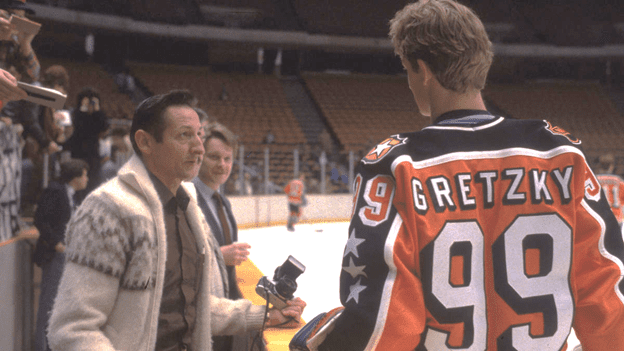It will always be a point of contention, amongst fans, the media, and the players themselves: how much money professional athletes make to play a sport. How many fans would say, “I would play in the NHL for free!” Well, unfortunately for them that is not the only criteria that gets you onto an NHL roster. Professional athletes are just that, professionals. They are the best in the world at what they do and whether you like it or not, they get paid millions of dollars to do so. Never mind the years of dedication, training, and sacrifices they have made to get to where they are, but let’s also remember that this is their job, and a player’s career has a small window to make the most money they can. Generally speaking if you have an agent negotiating on your behalf, you are one of the best at whatever it is you do.
The NHL has come a long way in player salaries, but still trails other sports like the NBA, NFL, and MLB in the size of contracts. Part of that is the cost of the TV deals that the NHL gets compared to say the billions of dollars that the NFL gets. Part of it is merchandise and ticket sales: you can pack nearly a hundred thousand fans into a stadium, but an arena is limited to about 25,000 at capacity. Part of it is the NHL salary cap that was introduced back in 2005 that brought parity to the league but also managed to cap how much the top players were able to make. Let’s take a look at how NHL salaries have evolved over the years.
Contract Length
There was a time where General Managers tried to outsmart the cap by offering players mega long-term contracts that would pay a smaller annual salary each year. The New York Islanders are the first team to come to mind in the early 2000s, when they offered goaltender Rick DiPietro an NHL record 15-year contract as well as a 10-year contract for Alexei Yashin. Both players stopped playing for the Islanders long before the contracts were over, meaning New York had to keep those contracts on the books for years. Chicago also handed out some epic contracts to keep its young core like Jonathan Toews, Patrick Kane, and Duncan Ketih intact. They did so, and they won a couple of Stanley Cups so organizationally it was a win, but now at the tail end of their careers, the Blackhawks have been rebuilding for some time. Now, after the most recent collective bargaining agreement, the longest contract that can be handed out by NHL teams is seven years.
Contract Amount
The dollar amounts of contracts will always rise over time given inflation and the relative price of the dollar. But if you take a look back over the years, you will notice a steady rise and fall of salaries as different CBAs and salary cap systems have been in place. In 1990, Wayne Gretzky was the highest played player in the NHL at $3 million per season. But a simple inflation calculator will tell you that this is only the equivalent of about $6 million in 2021. In 1995, Gretzky made $6.5 million, which in 2021 would be roughly $11 million. Still a pretty good discount for the greatest player of all time. Just five years later, Jaromir Jagr made $17 million in 2000, which in 2021 would be an astounding $26 million or about 35% of this season’s team salary cap. After 1996-1997, NHL player salaries ballooned, and Gretzky never was able to make his worth with his contracts, although he made plenty through endorsements after retirement.
But then in 2005-2006, the NHL salary cap was brought back where each team only had an incredibly low $39 million and no player was allowed to make more than 20% of the team’s salary. So Jagr went from $17 million in 2000, to $8 million in 2005. Still a lot of money, but imagine if your salary was cut in half during your prime years of work. The salary cap has steadily risen since 2005-2006, and player salaries along with it. This year, it isn’t Sidney Crosby or Alexander Ovechkin or even Connor McDavid that has the highest salary. It is Toronto Maple Leaf Auston Matthews, and a close second is his teammate Mitch Marner.
Historical Contracts and Salaries
It’s funny to go back in time and look at what the legends of the game were making compared to what an average player makes today. The first $1 million contract was not handed out until 1977-1978 to Bernie Parent and Bobby Hull, who wasn’t even in the NHL at that time. Hull’s contract came when he was playing in the WHA, or the World Hockey Association, a short-lived rival to the NHL. From 1953-1957, NHL legend and the late great Jean Beliveau, was the highest paid player every season with a salary of $21,000 CAD. In 1966-68, Bobby Orr was the highest played player with a salary of only $35,000 CAD. Finally, Jaromir Jagr managed to play during just the right time as he managed to amass $120 million over his great career, more than any other player in NHL history.
NHL salaries may never reach the point of other leagues like the NBA where the average 2021 salary hit $10 million, or the MLB where recently young superstar Fernando Tatis Jr. signed a 14-year $340 million contract. But players today have CBA negotiations and the NHLPA to thank for the amount of money they are able to make now compared to just a couple of decades ago. And remember, players don’t always make the published amount on their contracts, as can be seen when we previously broke down how much players actually make. As long as the NHL sticks to the current salary cap structure and limits how much the top salaries can be, we may never see the exorbitant contracts from the early 2000s, but the benefit for fans is a league with parity and evenly constructed teams no matter how big or small of a market they are in.






